Related Research Articles

Hazi Aslanov was an Azerbaijani major-general of the Soviet armoured troops during World War II. He was awarded the Hero of the Soviet Union title twice. The second Hero title was posthumously awarded in 1991, by Mikhail Gorbachev, at the constant recommendations by Heydar Aliyev.
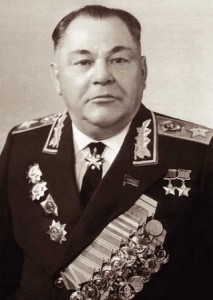
Pyotr Kirillovich Koshevoy was a Soviet military commander and a Marshal of the Soviet Union.
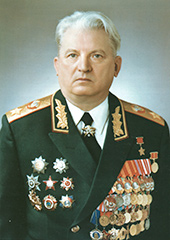
Semyon Konstantinovich Kurkotkin was a Soviet military commander and a Marshal of the Soviet Union.

Nikolay Pavlovich Pukhov was a Soviet Army colonel general and a Hero of the Soviet Union who commanded troops during World War II.

Semyon Ilyich Bogdanov was a Soviet Marshal of tank forces, and twice Hero of the Soviet Union.

Vasily Mikhailovich Badanov was a Soviet military officer and general, best known for his leadership in the Tatsinskaya Raid (1942) and subsequent command of the 4th Tank Army (1943–1944).

The 4th Guards Airborne Division was an airborne division of the Red Army that fought as infantry during World War II.
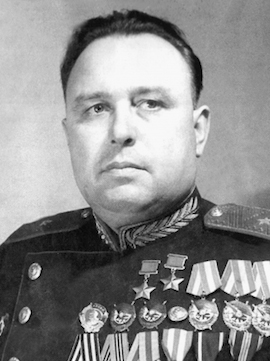
Vasily Sergeyevich Arkhipov was an officer in the tank troops of the Red Army who was twice awarded the title Hero of the Soviet Union for his actions in the Winter War and World War II. He rose to the rank of colonel general during the Cold War.
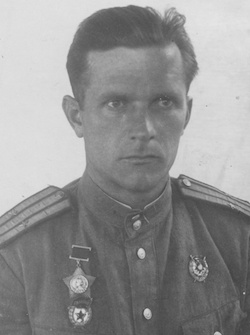
Aleksandr Alekseyevich Golovachev was a Red Army colonel twice awarded the title Hero of the Soviet Union for his leadership of the 23rd Guards Motor Rifle Brigade of the 7th Guards Tank Corps of the Red Army during the World War II.
The 215th Rifle Division was an infantry division of the Red Army during World War II that continued to serve in the Soviet Army during the early years of the Cold War. It was the successor to a motorized division of that same number that was destroyed during the Battle of Kiev in September 1941.
The 213th Rifle Division was formed as an infantry division of the Red Army during World War II after a motorized division of that same number was destroyed about seven weeks following the start of the German invasion of the Soviet Union.
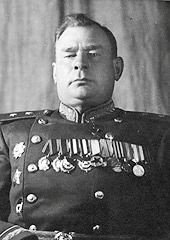
Alexey Osipovich Akhmanov was a Soviet Army lieutenant general and a Hero of the Soviet Union.

Alexander Ivanovich Akimov was a Soviet Army lieutenant general.

Dmitry Gavrilovich Sukhovarov was a Soviet Army colonel and a Hero of the Soviet Union.

Sergey Ilyich Gorshkov was a Red Army lieutenant general who held division and corps command during World War II.

Igor Mikhailovich Danshin was a Soviet Army major general of artillery who commanded the 22nd Anti-Aircraft Artillery Division during World War II.

Boris Mikhailovich Skvortsov was a Red Army major general of tank forces who rose to command the 5th Guards Mechanized Corps during World War II.

Nikita Fedotovich Lebedenko was a Soviet Army lieutenant general and a Hero of the Soviet Union.
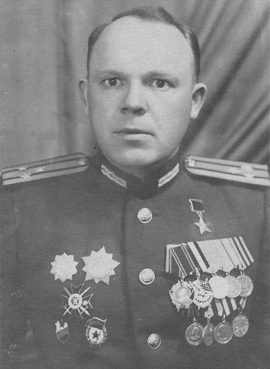
Georgy Stepanovich Ivanishchev was a Soviet Army major general and a Hero of the Soviet Union.

Ivan Nikitovich Yesin was a Soviet Army major general who held division commands during World War II.
References
Citations
- 1 2 3 4 5 6 7 Tsapayev & Hayrapetyan 2018, pp. 648–649.
- ↑ ""СЛАВУ ТРЕТЬЕЙ СТЕПЕНИ ДА МЕДАЛЬ ОТВАЖНУЮ..."". Зеркало недели | Дзеркало тижня | Mirror Weekly. Retrieved 2023-08-19.
Bibliography
- Tsapayev, D. A.; et al. (2018). Великая Отечественная: Комбриги. Военный биографический словарь[Brigade commanders of the Great Patriotic: Military Biographical Dictionary] (in Russian). Vol. 2. Moscow: Mnogo knig. ISBN 978-5-521-15100-4.